Effective call center management is key to delivering great customer service and ensuring smooth call center operations. With call centers being the first point of contact for many customers, how they are managed directly impacts customer satisfaction and retention.
In this article, we will explore the essential components of managing a call center, including team roles, strategies for improving performance, and common challenges faced in the industry. We’ll also discuss how to set up a call center effectively, focusing on practical tips and best practices for success. Whether you’re looking to enhance your current operations or are new to the call center setup, this overview will provide valuable insights to help you build a successful call center business that meets customer needs efficiently.
What Is a Call Center?
A call center is a centralized office or facility designed to handle a large volume of incoming and outgoing phone calls, typically for customer service or support. It plays a crucial role in facilitating communication between businesses and their customers.

Key characteristics of a call center
- Types: Call centers can be categorized into inbound and outbound. Inbound call centers primarily receive calls from customers seeking assistance, while outbound centers focus on making calls to potential clients for sales, surveys, or marketing purposes.
- Technology: Modern call centers utilize various technologies, such as automatic call distribution (ACD) systems, interactive voice response (IVR), and customer relationship management (CRM) software, to enhance efficiency and improve customer interactions.
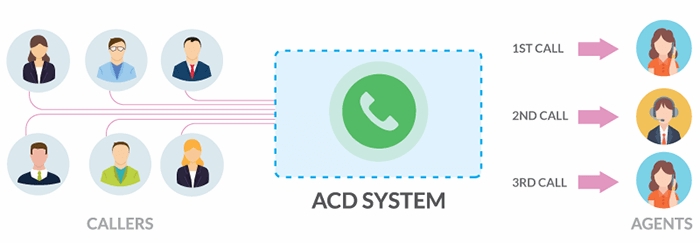
- Functions: The main functions of a call center include customer support, order processing, technical assistance, and follow-up communications. They serve as a vital link in maintaining customer relationships and providing solutions to inquiries or issues.
- Staffing: Call center agents are trained to handle a range of customer concerns, ensuring that queries are resolved efficiently. Managers oversee operations, monitor performance, and implement strategies to enhance service quality.
How to Start a Call Center
Starting a call center requires thorough planning and execution to ensure success in managing call center operations. Here’s a detailed guide to help you with setting up a call center:
1. Define your goals and objectives
Establishing clear goals is the foundation of any successful call center. Determine what you want to achieve, whether it’s providing exceptional customer service, boosting sales, or offering technical support.
Defining specific objectives, such as improving customer satisfaction scores or reducing average handling time, will guide your strategy and help you measure progress.
Involve your team in this process to gain insights and foster a sense of ownership.
2. Create a comprehensive business plan
A well-crafted business plan is crucial for the sustainability of your call center. This document should outline your business model, including the types of services you’ll offer (inbound, outbound, or both), target audience, and market analysis. It should also detail your financial projections, funding requirements, and operational structure. Additionally, includes strategies for growth, marketing, and customer retention. A robust business plan not only attracts investors but also serves as a roadmap for your call center’s operations.
3. Choose the right location
The location of your call center can significantly impact your operations. You can opt for a physical office, a remote setup, or an outsourced model. Each option has its pros and cons. A physical location allows for better team cohesion and management oversight but may incur higher overhead costs. Remote setups offer flexibility and can reduce costs, but they require strong communication and collaboration tools. Outsourcing can save time and resources but may lead to less control over quality. Assess your budget and operational needs when making this decision.
4. Invest in technology
The right technology is essential for efficient call center operations. Invest in automated call distribution (ACD) systems, interactive voice response (IVR) systems, and customer relationship management (CRM) software. These tools help streamline processes, manage customer interactions, and provide valuable insights through analytics. Consider cloud-based solutions for their flexibility, scalability, and lower initial costs. Ensure that your technology can integrate seamlessly with your existing systems to facilitate smooth operations.
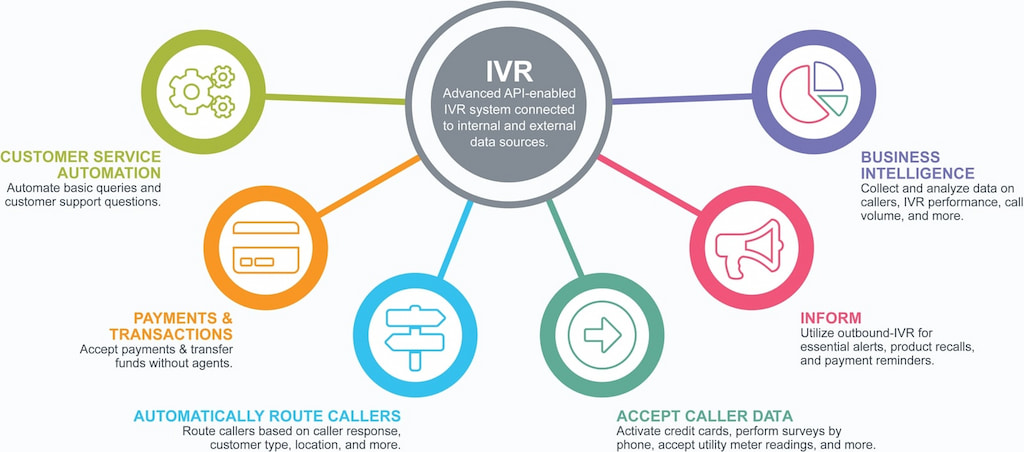
5. Hire and train staff
Your agents are the face of your call center, making it essential to hire the right talent. Look for individuals with strong communication skills, empathy, and problem-solving abilities. Once hired, invest in a thorough training program that covers not only the company’s policies and procedures but also product knowledge and customer service techniques. Continuous training is vital to keep staff updated on new products and skills, fostering a culture of growth and excellence and even helping with your call center cost savings.
6. Establish clear processes and procedures
Standardized processes ensure consistency in service delivery. Create detailed protocols for various aspects of call handling, including greeting customers, resolving issues, and escalating problems. Documenting these processes allows agents to handle calls efficiently and helps maintain quality. Additionally, feedback mechanisms should be incorporated to refine and improve these procedures continually based on real-world experiences.
7. Monitor and optimize performance
Regularly track key performance indicators (KPIs) such as call volume, average handling time, and customer satisfaction rates. Use analytics tools to identify trends and areas for improvement. Establish a culture of accountability by sharing these metrics with your team and encouraging them to participate in performance discussions. Implement feedback loops where agents can share their insights on process improvements, leading to better service and employee satisfaction.
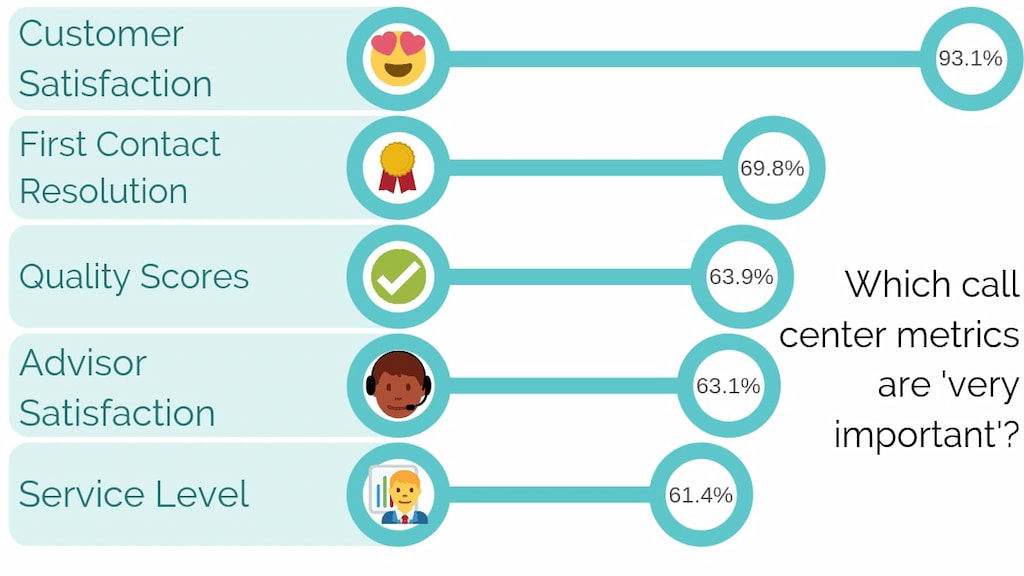
8. Develop a marketing strategy
To attract clients and build a strong customer base, implement an effective marketing strategy. Utilize digital marketing, social media, and networking to promote your services. Consider creating a website that highlights your offerings, testimonials, and case studies. Networking within your industry can lead to valuable partnerships and referrals. Additionally, leverage data analytics to understand your target market better and tailor your marketing efforts accordingly.
9. Ensure compliance with regulations
Familiarize yourself with industry regulations and legal requirements that govern call centers. This includes data protection laws, telemarketing regulations, and labor laws (you can read about California labor laws, for example). Compliance is crucial for protecting your business and maintaining customer trust. Regular audits and staff training on legal matters can help ensure that your call center adheres to all necessary regulations, avoiding costly penalties and reputational damage.
Starting a call center involves multiple steps, each requiring careful consideration and execution. By following these guidelines, you can set a solid foundation for your call center operations and position your business for success in the competitive landscape.
Key Roles in Call Center
Each position plays a vital part in ensuring the smooth functioning of call center activities. Here’s a breakdown of the primary roles typically found in call centers:
1. Call Center Manager: The call center manager oversees all operations within the call center. Their responsibilities include managing staff, setting goals, monitoring performance, and developing strategies to improve service delivery. They also handle budgeting and resource allocation.
2. Team Leader/Supervisor: Team leaders or supervisors serve as the bridge between agents and management. They monitor agent performance, provide coaching, and address any issues that arise. Their role includes conducting performance reviews, implementing training programs, and motivating team members to achieve their targets. Effective team leaders foster a positive work environment, contributing to employee satisfaction and retention.
3. Customer Service Agent: Customer service agents are the frontline representatives of the call center. They handle incoming calls, address customer inquiries, resolve issues, and provide information about products and services. Agents must possess strong communication skills and empathy to effectively assist customers and enhance their experience. Ongoing training is crucial for keeping agents informed about new products and policies.
4. Quality Assurance Specialist: Quality assurance specialists monitor calls, evaluate agent performance, and provide feedback to improve customer interactions. By analyzing call data and identifying trends, they help develop training materials and best practices to enhance service quality.
5. Workforce Management Analyst: Workforce management analysts are responsible for forecasting call volumes, scheduling staff, and analyzing performance metrics. They ensure that the call center is adequately staffed to handle customer demand while optimizing labor costs. Their insights help improve efficiency and service levels by ensuring the right number of agents are available at peak times.
6. Training and Development Coordinator: Training coordinators create training materials, conduct workshops, and evaluate the effectiveness of training initiatives. Their goal is to equip agents with the skills and knowledge necessary to excel in their roles and adapt to changes in products or procedures.
7. IT Support Specialist: IT support specialists maintain the technology and systems that power the call center. They troubleshoot technical issues, ensure system functionality, and support agents in using software and hardware effectively. Their role is critical in minimizing downtime and ensuring that agents can perform their tasks without technical hindrances.
8. Sales Representative: In call centers that focus on sales, sales representatives are responsible for promoting products and services over the phone. They engage with potential customers, present offerings, and close sales. Strong negotiation skills and product knowledge are essential for success in this role.
Core Components of Successful Call Center Management
If you want to know how to manage a call center, it’s crucial to focus on several core components that drive performance, enhance customer experience, and ensure operational efficiency. These components include:
📚 Robust training programs
Training is vital for equipping agents with the necessary skills and knowledge to handle customer inquiries effectively. A comprehensive training program should cover product knowledge, communication skills, customer service techniques, and the use of call center technology. Regular refresher courses and ongoing training help agents stay updated on new products and services, fostering confidence and competence.
📊 Performance metrics and KPIs
Tracking performance metrics is essential for evaluating the effectiveness of call center operations. Key Performance Indicators (KPIs) such as average handle time, first call resolution rate, and customer satisfaction scores provide insights into agent performance and overall service quality. Regularly analyzing these metrics allows management to identify areas for improvement and recognize high performers.
💪 Effective workforce management
Managing a call center workforce involves careful scheduling, forecasting call volume, and ensuring that sufficient staff is available during peak times. Tools like workforce management software can help in predicting call patterns and optimizing agent schedules, thereby improving service levels and reducing wait times for customers.
📁 Customer Relationship Management (CRM) systems
Implementing a CRM system is crucial for maintaining detailed customer records and streamlining communication. A good CRM allows agents to access customer histories, preferences, and previous interactions, enabling personalized service. This not only enhances customer satisfaction but also helps in resolving issues more effectively.
🔄 Continuous improvement strategies
A successful call center must prioritize continuous improvement through regular feedback loops, customer surveys, and performance reviews. Encouraging agents to share insights and suggestions can foster a culture of innovation. Implementing changes based on data-driven analysis helps enhance processes, reduce costs, and improve overall service quality.
👥 Strong leadership and team culture
Effective leadership is fundamental in guiding teams toward achieving call center goals. Leaders should foster an inclusive and supportive culture that promotes teamwork, accountability, and motivation. Regular team meetings, recognition programs, and open lines of communication help build a strong team spirit and ensure everyone is aligned with the center’s objectives.
Common Challenges in Call Center Management
Managing a call center comes with a unique set of challenges that can impact operations and customer satisfaction. Here are some of the most common obstacles:
🔄 High employee turnover
Call centers often experience high turnover rates due to the demanding nature of the work, leading to increased recruitment and training costs. The pressure of handling customer inquiries, meeting performance metrics, and long hours can contribute to employee burnout. Implementing effective retention strategies, such as employee recognition programs and career development opportunities, can help reduce turnover.

🌟 Maintaining service quality
Balancing efficiency with quality service can be challenging. Call centers must ensure that agents not only resolve issues quickly but also provide a positive customer experience. Inconsistent service quality can lead to customer dissatisfaction. Regular training, performance monitoring, and customer feedback can help maintain high standards.
💻 Adapting to technology changes
The rapid evolution of technology can create challenges in call center management. Agents may struggle to keep up with new tools and software, leading to inefficiencies. Providing ongoing training and support for new technologies is crucial to ensure agents can use them effectively. Using call center automation software might also help greatly.
📞 Managing call volume fluctuations
Call volume can vary significantly due to seasonal trends, marketing campaigns, or external events. This unpredictability can lead to overstaffing during quiet periods or understaffing during peak times, affecting service levels. Accurate forecasting and flexible staffing models can help manage these fluctuations.
✅ Ensuring compliance
Call centers must comply with various regulations related to customer data protection and telemarketing practices. Keeping up with changing laws and ensuring all agents are trained in compliance can be a significant challenge. Regular audits and training can help ensure adherence to these regulations.
😠 Handling difficult customers
Dealing with frustrated or aggressive customers is an inevitable part of call center operations. Agents may struggle to manage these interactions effectively, leading to negative experiences for both the customer and the agent. Providing agents with conflict resolution training and support from supervisors can help them navigate these challenging situations.

📊 Measuring performance effectively
Determining the right metrics to measure call center performance can be complex. Focusing solely on quantitative metrics, such as call duration, may overlook important qualitative aspects, such as customer satisfaction. A balanced scorecard approach that includes both quantitative and qualitative measures can provide a more comprehensive view of performance.
Best Practices for Call Center Management
Implementing best practices in call center management is essential for enhancing efficiency, improving customer satisfaction, and maintaining a positive work environment. Here are some key strategies:
1️⃣ Invest in training and development
Providing comprehensive training for new hires and ongoing development opportunities for existing agents is crucial. A well-trained staff is better equipped to handle customer inquiries effectively and confidently. Regular training sessions on product knowledge, customer service skills, and conflict resolution can lead to improved performance and job satisfaction.
2️⃣ Foster a positive work culture
Creating a supportive and positive work environment can significantly affect employee retention and morale. Encourage open communication, recognize achievements, and promote teamwork. Implementing employee wellness programs and providing opportunities for career advancement can further enhance job satisfaction.
3️⃣ Utilize technology effectively
Leveraging technology can streamline call center operations and improve efficiency. Implementing modern call center software can help with automated call routing, real-time monitoring, and performance analytics. Using customer relationship management (CRM) systems can provide agents with instant access to customer data, enabling them to personalize interactions and resolve issues faster.
4️⃣ Monitor key performance indicators (KPIs)
Regularly tracking KPIs such as average handling time, first call resolution, and customer satisfaction scores is essential for assessing call center performance. Analyzing these metrics can help identify areas for improvement and inform strategic decisions, enhancing strategic management. Set realistic benchmarks and adjust strategies based on data-driven insights.
5️⃣ Prioritize customer feedback
Actively seeking customer feedback through surveys or follow-up calls can provide valuable insights into the customer experience. Use this feedback to make necessary adjustments to processes and training. Demonstrating that customer input is valued fosters loyalty and encourages ongoing engagement.
6️⃣ Implement flexible scheduling
Offering flexible scheduling options can help manage call volumes more effectively and improve employee satisfaction. Utilize workforce management tools and call center software to forecast call patterns and adjust staffing levels accordingly. This approach not only enhances service quality but also accommodates agents’ work-life balance.
7️⃣ Encourage collaboration across teams
Promote collaboration between different teams within the organization, such as sales, marketing, and customer support. Sharing insights and strategies can help create a more cohesive approach to customer service. Regular meetings and inter-departmental projects can foster teamwork and improve overall service delivery.
8️⃣ Develop a strong contact center strategy
Creating a clear and comprehensive call center strategy that aligns with the overall business goals is essential for success. Define objectives, set performance standards, and outline procedures for handling various scenarios. Regularly revisit and update the strategy to adapt to changing market conditions and customer needs.
Check out the main and updated call center statistics and numbers to take into consideration when setting up a call center.
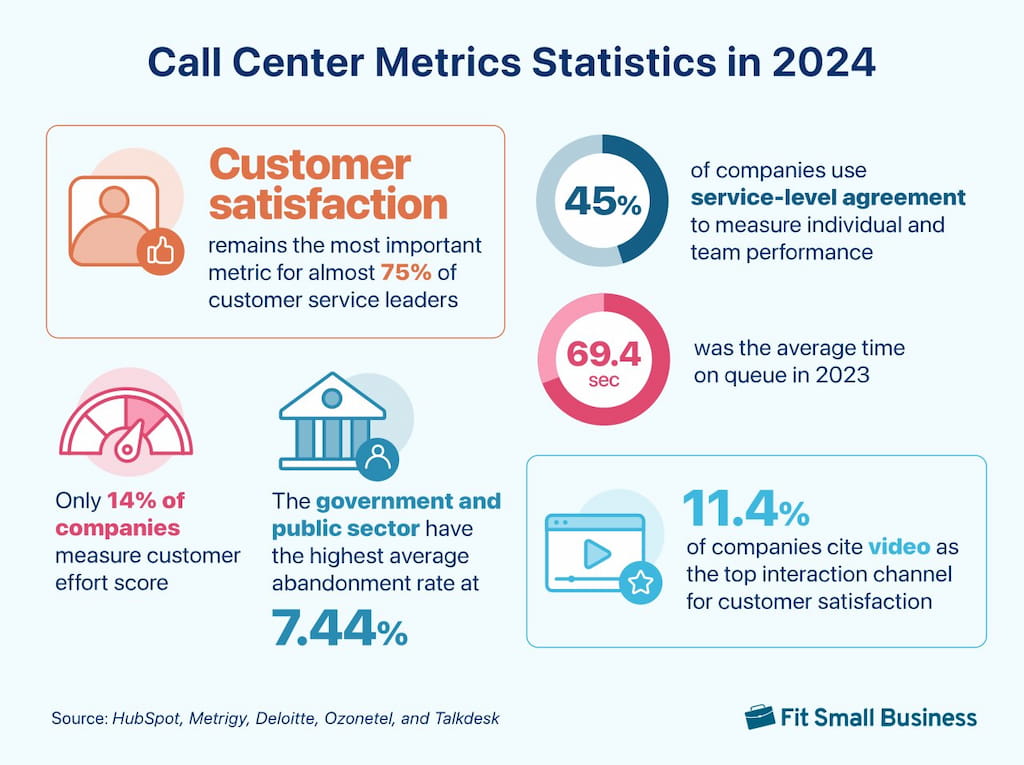
How to Build a Call Center with Everhour
Everhour offers several features that can significantly enhance call center management:
Streamlined time tracking
Everhour provides an accurate time tracker that allows call centers to monitor agent hours effectively. With features for real-time clock-in and clock-out, managers can easily see how many hours each agent is working, which helps ensure accountability and accurate payroll processing. This feature can significantly reduce the administrative burden on managers, enabling them to focus more on team performance rather than on tracking time manually.
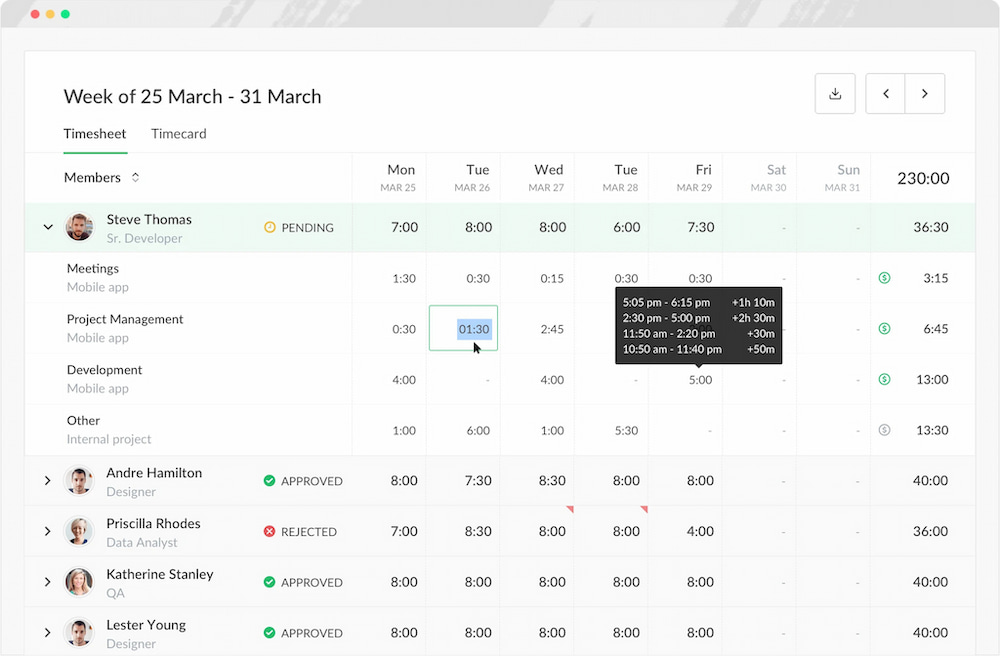
Performance analytics
The analytics dashboard offered by Everhour gives call center managers valuable insights into agent performance. By tracking key performance indicators (KPIs) and time to finish tasks, managers can identify areas where agents excel and where there might be room for improvement. This data-driven approach helps in making informed decisions regarding training and resource allocation.
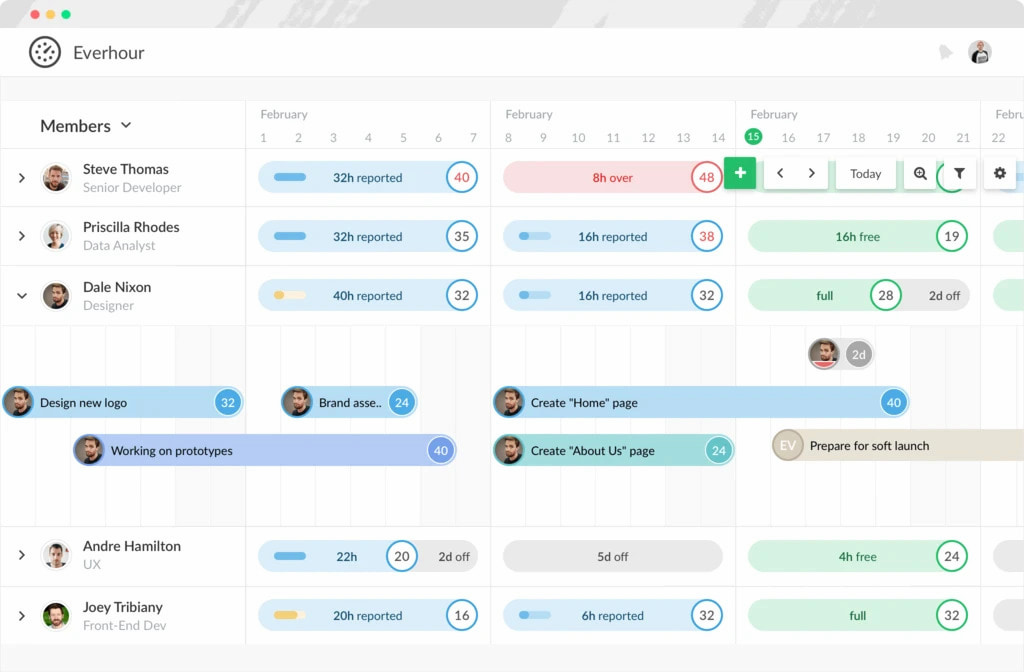
Project management integration
Everhour integrates seamlessly with popular project management tools like Asana, Trello, ClickUp, Jira, and many others, allowing call centers to streamline their operations. This integration enables teams to manage their tasks alongside time tracking, ensuring that every project is monitored and evaluated effectively. This holistic view helps improve efficiency by aligning resources with organizational goals.
Customized reporting
With Everhour, call center managers can generate customized reports that suit their specific needs. These reports can cover various aspects of call center operations, including attendance, productivity, and workload distribution. Such customization ensures that managers have access to the exact data they need to make strategic decisions, enhancing overall call center management.
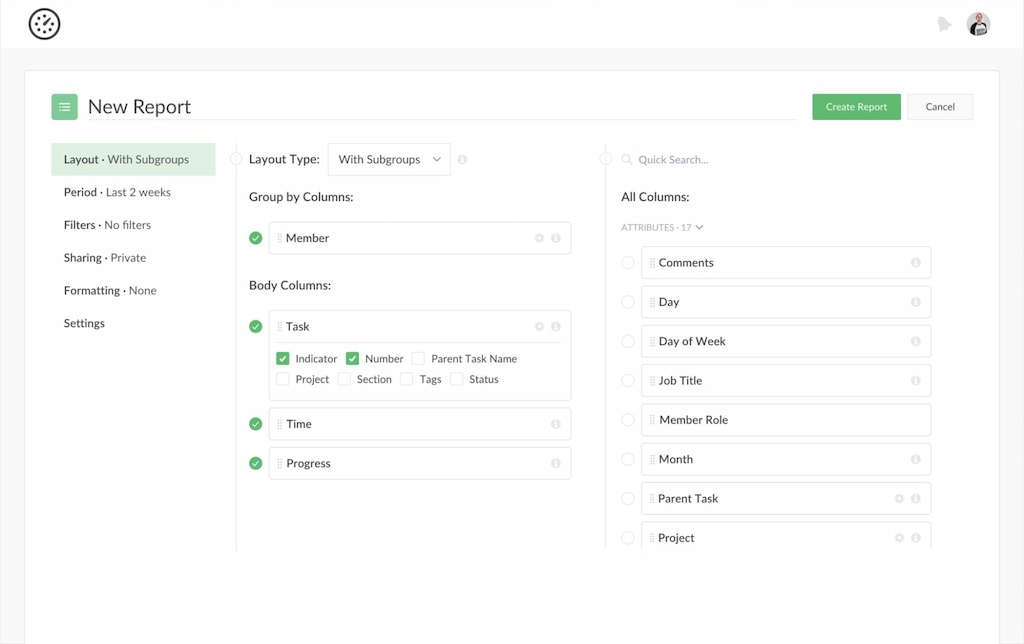
Employee engagement
Everhour encourages employee engagement by allowing agents to manage their own hours and track their performance. This transparency fosters a sense of ownership among team members, motivating them to perform better and be more accountable for their work. Happy employees often lead to better customer interactions, which is crucial in a call center environment.
By leveraging Everhour’s capabilities, call centers can enhance their management strategies, streamline operations, and improve both employee satisfaction and customer service quality.
If you are managing a team of 5 or more and looking to boost efficiency, Everhour is the perfect small business app to keep your team on track. With seamless time tracking, you can easily estimate task durations, set clear budgets, and generate detailed reports inside Asana, Trello, Jira, or any other pm tool.

